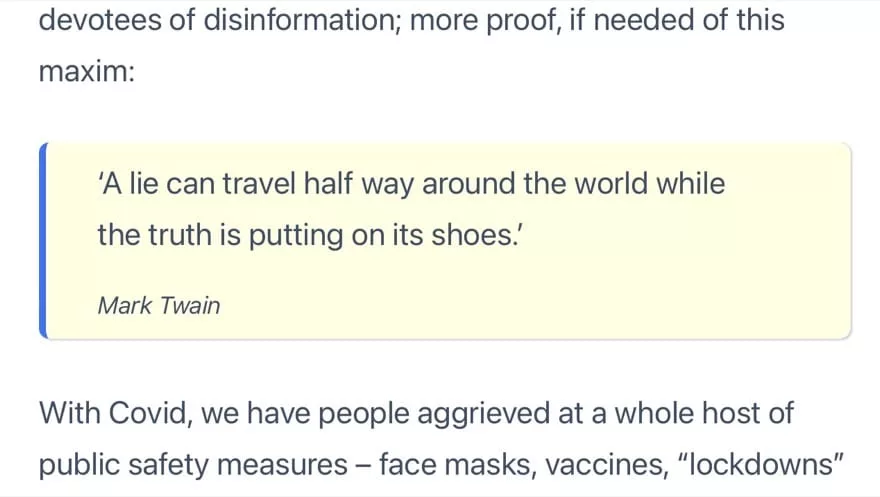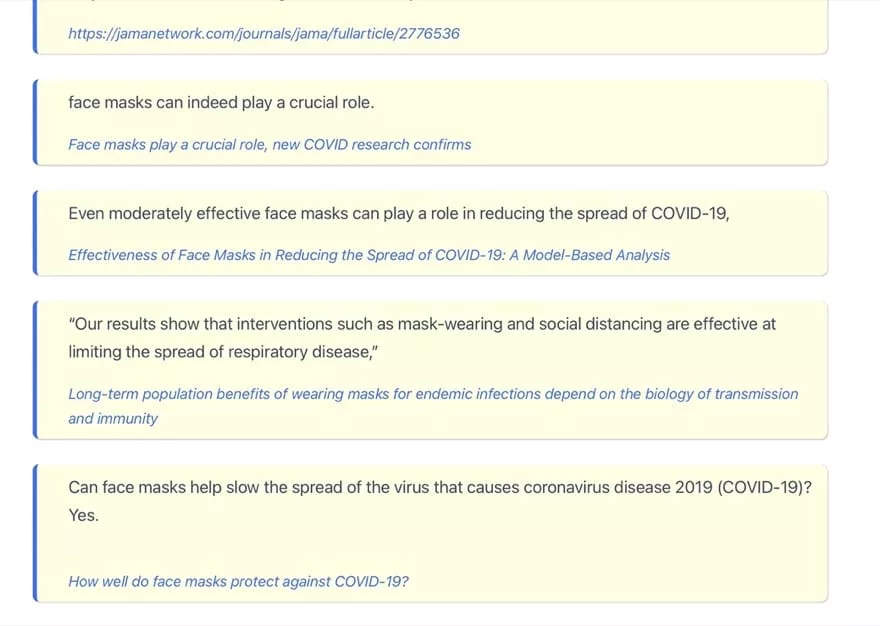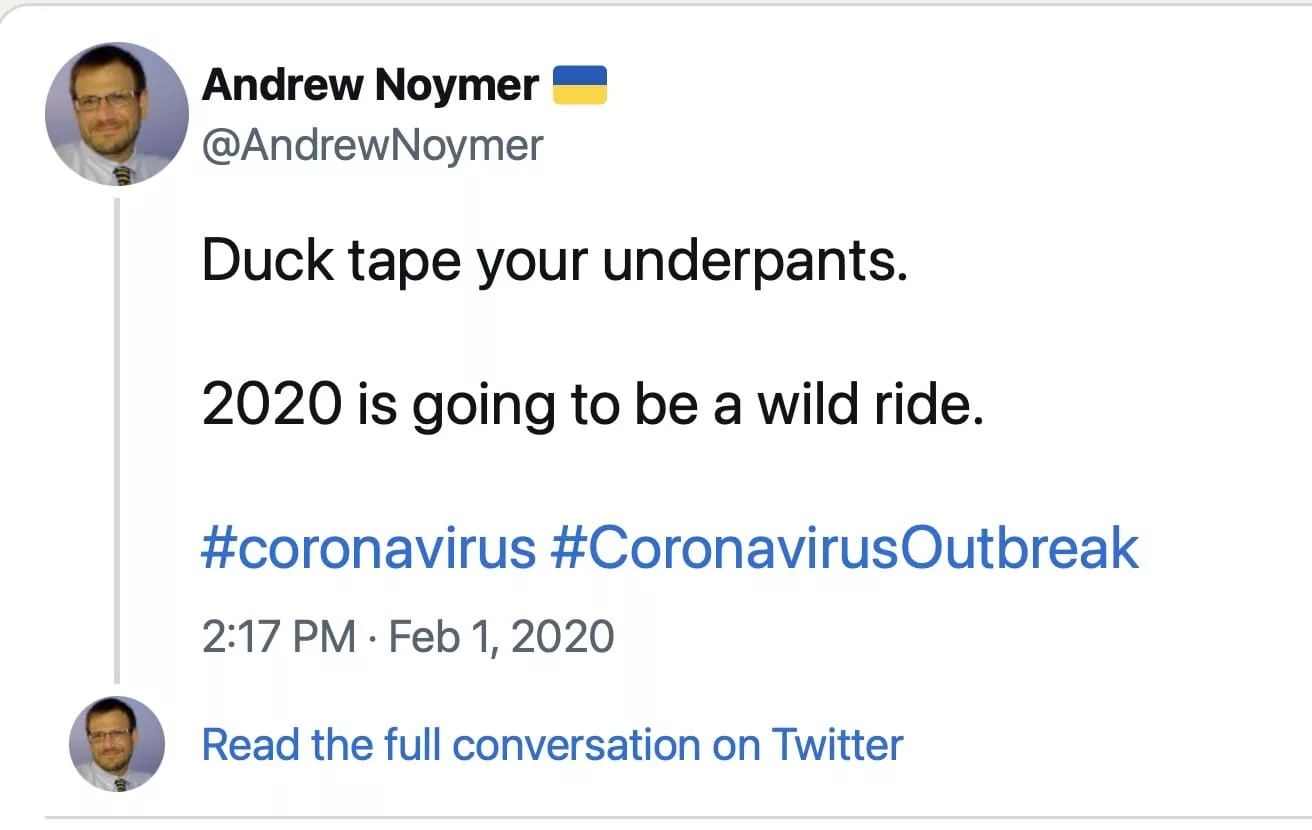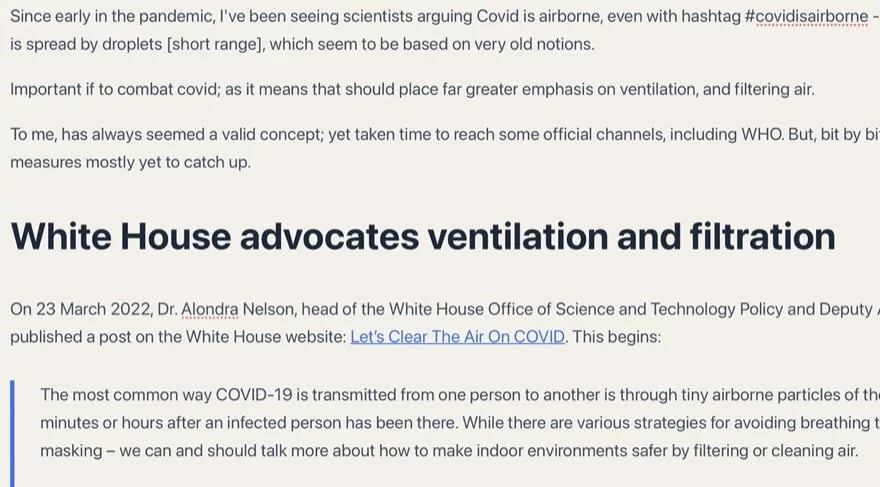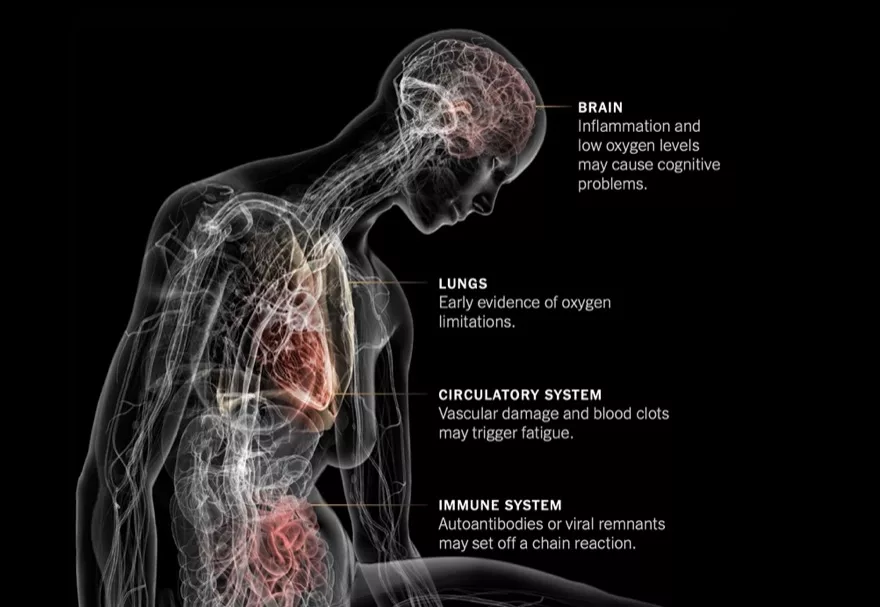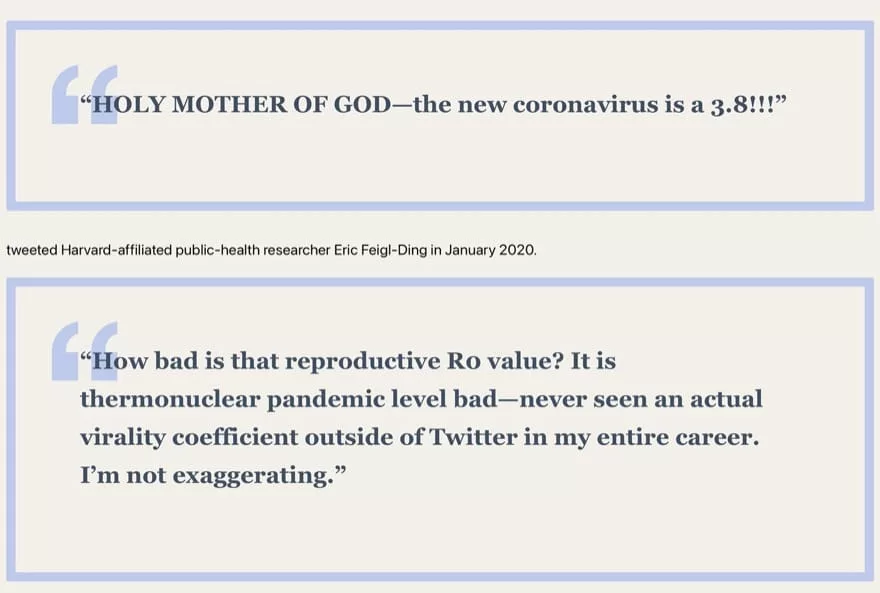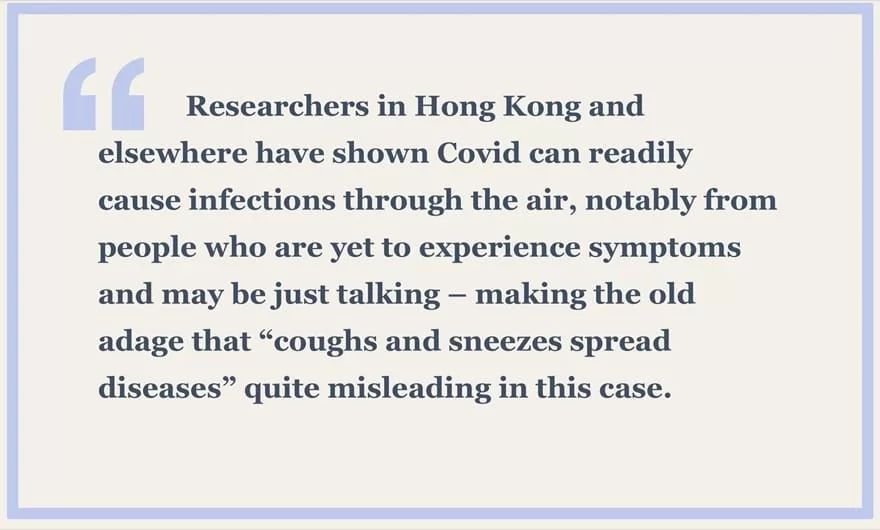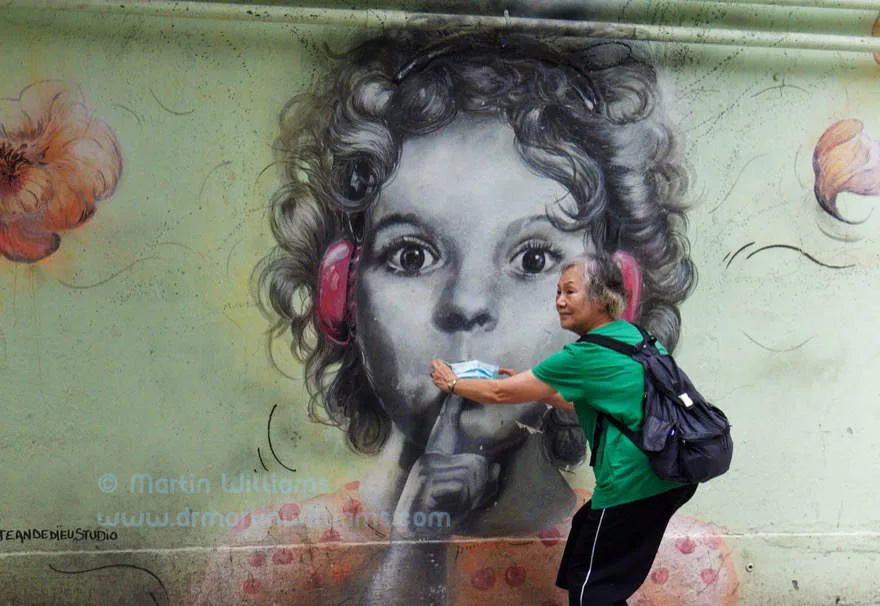When I first read of Covid originating near a lab conducting experiments with viruses, I thought just coincidence. Since then, I’ve come to believe in lab origin – and that scientists had sought coronaviruses from bats, brought them to Wuhan for study, even conducted experiments, changing them somewhat, perhaps in ways that made them more transmissible in humans.
Not a certainty; the origins of Covid are hard to discern, with much smoke and mirrors. But, can’t be ruled out, despite efforts to do so.
Here, a few bits n pieces related to this issue.
- Gain of Function Research and Covid
- Furin Cleavage Site “stunning”
- Lancet Commission: both zoonotic spillover and research-related incident require further scientific investigation
- The Debate is Over. Time to Explore Possibility of a Lab Leak
- “You end up with a small number of viruses that really do look like killers”
- Peter Daszak had warned of threats from lab-enhanced viruses
- Science journalists too chummy with some researchers?
- What If?
- Prior warnings of lab leak of potential pandemic virus
- Shenanigans re genetic detective work; more about Daszak and his grifting
- How some scientists came up with paper purportedly showing lab leak didn’t happen
- Alina Chan Weighs the Evidence
- Market animals tested but samples negative
- Raccoon dogs blamed yet flimsy evidence, and their Covid infections mainly nasal?
- Lab leaks do happen
- Science writer Wendy Orent adamant market origin is how it rolls
- Chimeric viruses and humanized mice
- The DEFUSE proposal
- US Funded Research in Bid to Discover What was Happening in China?
- Independent Enquiry Called For
- US intelligence community (somewhat) favours lab leak
- Lab leak notions gaining ground
- Intriguing timing of China funding offer to Harvard
- References to check out
Gain of Function Research and Covid
A paper by microbiologist Patrick Berche assesses the background to and evidence for the competing theories re origin of Covid: from market in Wuhan, or from lab in Wuhan that was collecting viruses and conducting experiments including “gain of function” – tweaking viruses to become better at infecting humans, in this case by adding a furin cleavage site that enables the former bat coronavirus to far more readily infect human cells. Includes:
the Spike protein, a major virulence factor, has a furin site, not found in any other known sarbecovirus…
Scientists holding up this [market origin] scenario support the idea that a predecessor of SARS-CoV2 might have circulated silently in human populations for years until acquiring the cleavage site, then triggering the Covid19 pandemic….
The alternative scenario is that of a laboratory accident after gain-of-function manipulation of SARS-CoV2. First, there is the absence of identified intermediate hosts after three years of pandemics. Second, why Wuhan? This megapolis where the first cases of Covid-19 were detected is remote from the areas of bat reservoirs. In the early phase of the pandemic, the absence of secondary outbreaks that would have accompanied the trade of living animals is surprising…
Moreover, the SARS-CoV2 was immediately highly contagious, witnessing a remarkable adaptation of this bat virus to humans. The presence of a furin site in SARS-CoV2, which is not found in any other known sarbecovirus, is also a singular feature that remains to be explained…
Breaches in the security systems of the WIV have also been suspected, particularly in mid-November 2019.
Gain-of-function and origin of Covid19
Furin Cleavage Site “stunning”
As to that furin cleavage site; it has remained problematic for anyone trying to argue for a market origin of Covid; as in email from a virologist quoted in Intercept article:
“I just can’t figure out how this gets accomplished in nature. … it’s stunning.”
Evolution of a Theory
Unredacted NIH Emails Show Efforts to Rule Out Lab Origin of Covid
Lancet Commission: both zoonotic spillover and research-related incident require further scientific investigation
In The Lancet Commission on lessons for the future from the COVID-19 pandemic – “a comprehensive investigation, analysis, and response to COVID-19” published in September 2022, with multiple authors – key findings include:
The proximal origin of SARS-CoV-2 remains unknown. There are two leading hypotheses: that the virus emerged as a zoonotic spillover from wildlife or a farm animal, possibly through a wet market, in a location that is still undetermined; or that the virus emerged from a research- related incident, during the field collection of viruses or through a laboratory-associated escape. Commissioners held diverse views about the relative probabilities of the two explanations, and both possibilities require further scientific investigation. Identification of the origin of the virus will help to prevent future pandemics and strengthen public trust in science and public authorities.
The Lancet Commission on lessons for the future from the COVID-19 pandemic
See below, too, re the commission chair, Jeffery Sachs, believing a research-related incident may well explain the origin of Covid.
The Debate is Over. Time to Explore Possibility of a Lab Leak
don’t take my word that the debate over the possibility of a lab leak is now settled. In February 2020, soon after COVD-19 began spreading around the world, Peter Daszak of EcoHealth Alliance orchestrated a letter signed on to by 26 other scientist, published in The Lancet, “to strongly condemn conspiracy theories suggesting that COVID-19 does not have a natural origin.”
But in an interview with The Intercept published late last week, Daszak offered a quite different opinion, “Do I agree that it’s possible that Covid-19 emerged through a lab leak? Of course.”
The debate over the possibility of a lab leak is now over. Let’s now focus on appropriately exploring that possibility.
Debate over the possibility of a COVID-19 lab leak is over
“You end up with a small number of viruses that really do look like killers”
In 2016, the above-mentioned Peter Daszak was a panellist in a forum on emerging infectious diseases and the next pandemic. He spoke of work with Chinese colleagues, including:
WE FOUND VIRUSES IN BATS. SOME OF THEM LOOKED VERY SIMILAR TO SARS. WE SEQUENCED THE SPINE PROTEIN, THE PROTEIN THAT ATTACHES TO CELLS, AND THEN YOU
CREATE PSEUDO-PARTICLES, INSERT PROTEINS FROM THE VIRUSES THAT COMBINED TO HUMAN CELLS. EACH STEP OF THIS, YOU MOVE CLOSER AND CLOSER TO COULD THE VIRUS BECOME PATHOGENIC IN PEOPLE?YOU NARROW DOWN THE FIELD. YOU REDUCE THE COST, AND END UP WITH A SMALL NUMBER OF VIRUSES THAT REALLY DO LOOK LIKE KILLERS.
Peter Daszak (from text created from closed captions)
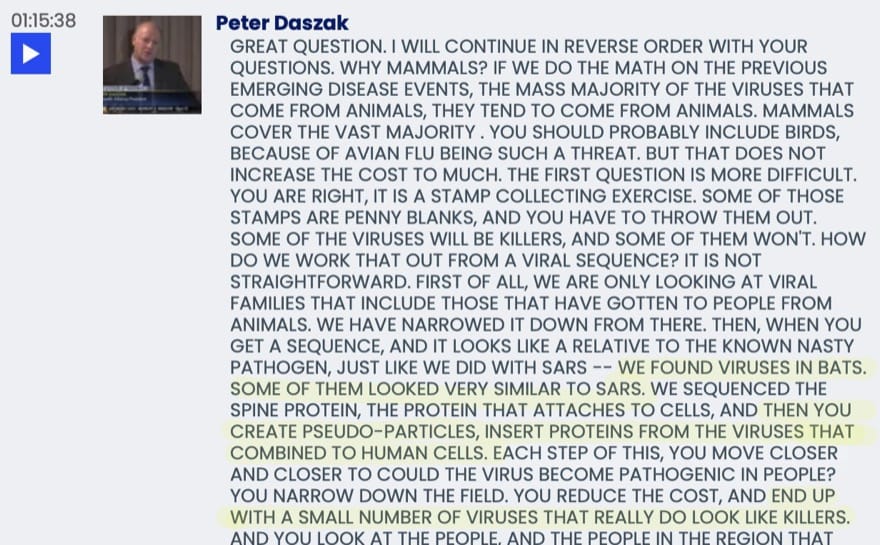
Daszak was sitting next to science journalist Amy Maxmen, who also spoke during the forum. Yet not only did she seem unperturbed by this, not figuring “Whoah, what a story!” as I might have done [instead, has been among those ridiculing idea of lab leak, and not – to my knowledge – mentioning this from Daszak], she later denied having ever met Daszak, which she had to quickly reverse when photos and video from this meeting quickly surfaced. She has sided with those downplaying lab leak idea.
And here, a tweet from Daszak, 22 November 2019:

The research Daszak refers to was funded at least partly by the US National Institute of Health [with support from Anthony Fauci]. Daszak has not boasted re the work since Covid began; details are still lacking – even NIH could not get adequate information, terminating funding for the work with Wuhan, tho waiting till August 2022 to do so:
The National Institute of Health (NIH) is partially terminating a grant to a nonprofit that worked extensively with the Wuhan Institute of Virology on bat coronavirus research. In letters posted by Republicans on the House Oversight Committee this month, an NIH official said EcoHealth Alliance had not been able to hand over lab notebooks and other records from its Wuhan partner that relate to controversial experiments involving modified bat viruses, despite multiple requests.
In an Aug. 19 letter to Kentucky Rep James Comer, the top Republican member of the US House Oversight Committee, Michael Lauer, the deputy director of extramural research at NIH, said the agency had informed EcoHealth that it was terminating the sub-award to the Wuhan Institute of Virology “for failure to meet award terms and conditions requiring provision of records to NIH upon request.”
NIH to terminate EcoHealth Alliance grant after its Wuhan partners refuse to deliver information on coronavirus studies
…
Between June 2017 and May 2019, scientists working on EcoHealth’s grant tested genetically engineered coronaviruses with the backbone of one virus and the spike proteins—which bind to host cells—of another on mice that expressed human cell receptors. In one case, the NIH reported last fall, one of the chimeric viruses caused mice to become “sicker.” EcoHealth reports show that in the infection experiments, conducted in years four and five of the grant, chimeric viruses replicated faster in mice lungs and killed a higher percentage of mice than the unmodified virus.
Peter Daszak had warned of threats from lab-enhanced viruses
April 2023 update: turns out Daszak gave a presentation pre-Covid, in which he warned of potential threats from lab-enhanced viruses. Post-Covid, leading denials that a lab leak could have happened. Covered in an article by Ian Birrell, including:
In this newly uncovered presentation, the scientist warned that “gain-of-function” research — which boosts the transmissibility of viruses — was “elevating the risk” that “deadly novel biological agents” could be released through accident or design. The document, demanding the urgent development of counter-measures, put such risk at the same level as natural spillover from the wild. It even focused on the specific threat from coronaviruses.
Yet after the pandemic erupted in Wuhan, Daszak headed the charge against those claiming the mysterious new disease might be potentially linked to research in the city, with even the British Medical Journal branding him the leader of the campaign to label such critics as conspiracy theorists.
Little wonder the disclosure of this document has provoked angry claims of hypocrisy. Richard Ebright, an expert on biosecurity and professor of chemical biology at Rutgers University in New Jersey, told me it meant that Daszak and his allies have spent the past three years not telling the world the whole truth. The revelations, he said, underlined “the shocking recklessness” of funding gain-of-function research in Wuhan that was being carried out at a low-level biosecurity lab “with no protections beyond a pair of gloves, a lab coat and a hood”.
Why did Peter Daszak change his mind?
Science journalists too chummy with some researchers?
After I mentioned re Amy Maxmen above. Jon Cohen of Science mag has pooh-poohed lab leak notions; I’ve seen him refer to Fauci as “Tony” as if they’re best mates, to me indicating none too objective. Carl Zimmer lately wrote of research supposedly supporting “wild” animal market origin for NY Times; not really great evidence used for the studies he reported on tho.
Nicholas Wade, a former NY Times science editor – and lab leak proponent, has written an article – Journalists, or PR Agents? Why science reporters don’t report fairly on the origins of Covid-19 – on the links between sci journalists and some scientists, leading to lack of objectivity. He concludes:
Science writers need to decide whether their duty lies to their readers or to their sources. One choice makes them real journalists, the other just unaccredited PR agents for the scientific community.
Nicholas Wade
Lack of objectivity is covered in an article on the Target website, which focuses on Jon Cohen of Science, and how he apparently opted not to do a scoop on behind the scenes shenanigans.
In many instances, pandemic-related science journalism smacks of questionable motives.
Treason of the Science Journals
What If?
For me, the key article in persuading me re lab leak was in New York Magazine, by Nicholas Baker, titled: The Lab-Leak Hypothesis. In his conclusion:
For more than 15 years, coronavirologists strove to prove that the threat of SARS was ever present and must be defended against, and they proved it by showing how they could doctor the viruses they stored in order to force them to jump species and go directly from bats to humans. More and more bat viruses came in from the field teams, and they were sequenced and synthesized and “rewired,” to use a term that Baric likes. In this international potluck supper of genetic cookery, hundreds of new variant diseases were invented and stored. And then one day, perhaps, somebody messed up. It’s at least a reasonable, “parsimonious” explanation of what might have happened.
Nicholas Baker
Prior warnings of lab leak of potential pandemic virus
Lab leaks have happened before – including anthrax from a Russian lab; and some scientists have warned about changing potentially dangerous viruses in ways that could make them more infections/dangerous in humans; as per research that apparently took place in Wuhan. From an article in Scientific American in Dec 2019:
The federal government announced on Tuesday that it is lifting a three-year moratorium on funding controversial research that involves genetically altering viruses in ways that could make them more contagious, more deadly, or both—and that critics say risks triggering a catastrophic pandemic.
Called gain-of-function experiments, the studies aim to understand genetic changes that can make viruses such as bird flu, SARS (severe acute respiratory syndrome), and MERS (Middle East respiratory syndrome) more transmissible from person to person. But if they escaped from the lab, perhaps through human error, the modified viruses could in theory spread quickly or be extremely virulent, increasing the toll of an outbreak.
Controversial, High-Risk Virus Research
Here, in a Nature article from 2015:
An experiment that created a hybrid version of a bat coronavirus — one related to the virus that causes SARS (severe acute respiratory syndrome) — has triggered renewed debate over whether engineering lab variants of viruses with possible pandemic potential is worth the risks.
…
The researchers created a chimaeric virus, made up of a surface protein of SHC014 and the backbone of a SARS virus that had been adapted to grow in mice and to mimic human disease. The chimaera infected human airway cells — proving that the surface protein of SHC014 has the necessary structure to bind to a key receptor on the cells and to infect them.
…
Simon Wain-Hobson, a virologist at the Pasteur Institute in Paris, points out that the researchers have created a novel virus that “grows remarkably well” in human cells. “If the virus escaped, nobody could predict the trajectory,” he says.
…
“The only impact of this work is the creation, in a lab, of a new, non-natural risk,” agrees Richard Ebright, a molecular biologist and biodefence expert at Rutgers University in Piscataway, New Jersey. Both Ebright and Wain-Hobson are long-standing critics of gain-of-function research.
Engineered bat virus stirs debate over risky research
See also this seemingly prescient Twitter thread from Carl Bergstrom – theoretical and evolutionary biologist and a professor at the University of Washington in Seattle, Washington – dated Dec 21, 2017; includes:
NIH has just lifted ban on gain-of-function (GOF) experiments w/ dangerous viruses including influenza, SARS. 1/10
In these experiments, researchers evolve the viruses to spread readily among mammals such as the ferrets used to model human flu.
Of course, the problem is that if something goes wrong and the virus escapes, it could start a pandemic and kill millions.
NIH has just lifted ban on gain-of-function (GOF) experiments w/ dangerous viruses
Marc Lipsitch – epidemiologist and Professor in the Department of Epidemiology at the Harvard T.H. Chan School of Public Health – was among people who warned against gain of function research. For instance, in a 2014 commentary with Alison Galvani:
While the leading virology laboratories in the world are likely to pose a very low probability of an accidental infection, the research published from these laboratories may facilitate the replication and extension of risky research in less stringently controlled settings. Moreover, given the potentially devastating consequences of an accidental infection, the burden should be on the proponents to quantify that nonzero risk and show why it can be neglected.
The case against ‘gain-of-function’ experiments: A reply to Fouchier & Kawaoka
Also by Lipsitch, in August 2018:
experiments to create potential pandemic pathogens (PPPs) are nearly unique in that they present biosafety risks that extend well beyond the experimenter or laboratory performing them; an accidental release could, as the name suggests, lead to global spread of a virulent virus, a biosafety incident on a scale never before seen
Why Do Exceptionally Dangerous Gain-of-Function Experiments in Influenza?
See also this warning from March 2019, by then director of the Chinese CDC, George Gao:
A potential major risk stems from stocks of concentrated infectious pathogens stored in laboratories and the absence of adequate biosecurity measures. Non-compliance of approved biocontainment and biosafety protocols could result in accidental or deliberate release of pathogens into the environment…[G]enetic modification of pathogens, which may expand host range as well as increase transmission and virulence, may result in new risks for epidemics…synthetic bat-origin SARS-like coronaviruses acquired an increased capability to infect human cells. Thus, modifying the genomes of animals (including humans), plants, and microbes (including pathogens) must be highly regulated.
Reported in The Origins of Covid-19, a US senate report prepared by the Muddy Waters Group.
Shenanigans re genetic detective work; more about Daszak and his grifting
Katherine Eban has done some strong reporting on lab leak issue for Vanity Fair, which on 31 March 2022 published a long article by her on some odd goings-on about a preprint on some data from China related to origins of Covid going missing; plenty more info, including on Peter Daszak and his organisation, along with info that to me is very informative re his moral compass. From the article, which is well worth reading:
On June 18, 2021, an evolutionary biologist named Jesse D. Bloom sent the draft of an unpublished scientific paper he’d written to Dr. Anthony Fauci, the chief medical adviser to the president of the United States.
…
Andersen [another evolutionary biologist] made a suggestion that surprised Bloom. He said he was a screener at the preprint server, which gave him access to papers that weren’t yet public. He then offered to either entirely delete the preprint or revise it “in a way that would leave no record that this had been done.” Bloom refused
…
In 2014, Fauci’s agency had issued a $3.7 million grant to EcoHealth Alliance, a nongovernmental organization dedicated to predicting and helping to prevent the next pandemic by identifying viruses that could leap from wildlife to humans. The grant, titled Understanding the Risk of Bat Coronavirus Emergence, proposed to screen wild and captive bats in China, analyze sequences in the laboratory to gauge the risk of bat viruses infecting humans, and build predictive models to examine future risk. The Wuhan Institute of Virology (WIV) was a key collaborator to whom EcoHealth Alliance gave almost $600,000 in sub-awards. But the work there had been controversial enough that the NIH suspended the grant in July 2020.…
For years, [EcoHealth founder] Peter Daszak sat at the helm of a struggling nonprofit with a mission to save manatees, promote responsible pet ownership, and celebrate threatened species. The organization, which operated under the name Wildlife Trust until 2010, was constantly on the hunt for ways to close its budget shortfalls. One year, it proposed to honor at its annual benefit a mining company operating in Liberia that was paying it to assess the risks of Ebola virus. Another idea was to seek donations from palm-oil millionaires leveling rainforests who might be interested in “cleaning up” their image.The grant application proposed to collect bat samples from caves in Yunnan Province, transport them to the Wuhan Institute of Virology, extract and manipulate the viruses they contain, and use them to infect mice with humanized lungs….
By almost any definition, this was gain-of-function research.
“This Shouldn’t Happen”: Inside the Virus-Hunting Nonprofit at the Center of the Lab-Leak Controversy
On Twitter, Jesse Bloom has posted a thread with additional context to this article. Includes his comment that, “It’s unusual to have contentious weekend meetings about not-yet-posted preprints involving NIH, NIAID & NCBI directors.” Also:
In my mind, above facts reinforce a conclusion of my paper: we need to worry about data completeness as much as phylogenetic methodology. No analysis method can be confidently correct if Chinese govt isn’t allowing sharing of complete data
Bloom Lab
How some scientists came up with paper purportedly showing lab leak didn’t happen
An article in The Nation reviews emails showing how some scientists produced influential paper dissing lab leak origins, even though it seems they weren’t certain of this conclusion, and lacked solid evidence to support it.
“It appears as if a combination of a scant amount of data and an unspoken bias against the [lab origin] scenario diminished the idea in their minds,”
Unredacted NIH E-mails Show Efforts to Rule Out a Lab Origin of Covid
More information on this has emerged, including after emails were released:
Virologists who worked to squelch consideration of a lab origin of COVID-19 in early 2020 worked in tandem with leaders in scientific research funding, according to their private emails.
Leaders of the National Institutes of Health in the United States and the Wellcome Trust in the United Kingdom played an undisclosed role in persuading virologists to write an influential article asserting a natural origin of SARS-CoV-2, according to a memo released Sunday by investigators with the Select Subcommittee on the Coronavirus Pandemic.
…Columbia University virologist Ian Lipkin wrote on February 11, 2020, that an early draft of the article “does not eliminate the possibility of inadvertent release following adaptation through selection in culture at the institute in Wuhan,” citing a “nightmare of circumstantial evidence” at the Wuhan lab.
The new congressional memo shows for the first time that Holmes wrote on February 11, 2020, that he agreed with Lipkin’s assessment, even after he had drafted the first version of the article that would dispel the lab leak theory.
Holmes also said he had concerns about how quickly the virus had emerged in humans, apparently without detection in a likely zoonotic reservoir, in contrast to the SARS epidemic.
“It is indeed striking that this virus is so closely related to SARS yet is behaving so differently. Seems to have been pre-adapted for human spread since the get go,” Holmes said.
Congressional memo: Virologists drafted article against the lab leak theory on behalf of Wellcome Trust, NIH
Alina Chan Weighs the Evidence
The evidence for a natural vs lab origin of Covid-19 is a very useful blog post by Alina Chan, co-author of VIRAL: The Search for the Origin of Covid [with Matt Ridley; who is – sadly – noted for climate misinformation].
Among figures:
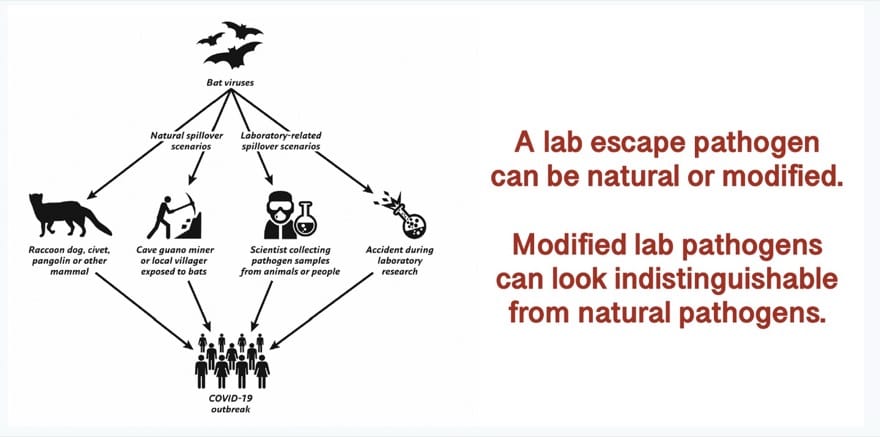
Market animals tested but samples negative
There are loud voices arguing Covid originated in animals traded in Huanan market – too often, it seems, from researchers involved in experiments on bat coronaviruses etc etc.
Yet, there’s no “smoking gun” – no animal found to be infected with Covid prior to the outbreak beginning in Wuhan. Quite the contrary; as the pandemic was just beginning, there was an investigation of the Huanan market, searching for the coronavirus:
From 18th January, 457 samples were collected from 18 species of animals, comprising of unsold contents of refrigerators and freezers, swabs from stray animals, and the contents of a fish tank. Using RT-qPCR, SARS-CoV-2 was detected in 73 environmental samples, but none of the animal samples.
Surveillance of SARS-CoV-2 at the Huanan Seafood Market [not final publication]
Note, too, that Huanan was not the only place selling “wild” animals [which are often farmed anyway]; there was a survey of such animals for sale in Wuhan shortly before Covid began:
These shops selling live, often wild, animals included two at Baishazhou market (a large market comprising c. 400 other types of shop), seven at Huanan seafood market (c. 120 other shops), four at Dijiao outdoor pet market (c. 100 other shops), and four at Qiyimen live animal market (c. 40 other shops).
Animal sales from Wuhan wet markets immediately prior to the COVID-19 pandemic
Raccoon dogs blamed yet flimsy evidence, and their Covid infections mainly nasal?
While there have been ideas raccoon dogs were key to origin of Covid in the Huanan market, there were few on sale per month [average 38, across all Wuhan, according to survey].
Much was made of DNA samples taken at the Huanan market, by a small band of western researchers; with a claim that these indicated link between raccoon dog and Covid infection. Yet this claim is clearly poppycock:
It seemed that the raccoon dog claim originated from Q61. But in his own sequencing, Bloom found that out of 200 million “reads,” or discrete viral samples, on the swab, only a single one was positive for the coronavirus. Given that the coronavirus was already spreading throughout Wuhan for several months by then, that particle was far more likely deposited by an unsuspecting human than by a sick animal.
In other words, the Chinese researchers who had been the first to study the swabs, and had concluded that humans carried the virus to the market, appeared to have been correct all along.
Raccoon dogs did not start COVID-19, new study says
Plus, experiments haven’t indicated they are liable to be great spreaders:
Fur producers in China own >14 million captive raccoon dogs, accounting for »99% of the global share of raccoon dogs
… Our experimental study demonstrates that raccoon dogs are susceptible to SARS-CoV-2 infection and can transmit the virus to direct in-contact animals. In our study, raccoon dogs had only subtle clinical signs. We found evidence of viral replication and tissue lesions in only the nasal conchae.
Susceptibility of Raccoon Dogs for Experimental SARS-CoV-2 Infection
Virologist Jesse Bloom has looked at evidence purportedly linking raccoon dogs to Covid in the market, and found it in no way indicates whether any were actually infected with it:
SARS-CoV-2 reads are most correlated with reads mapping to various fish, such as catfish and largemouth bass. These results suggest that while metagenomic analysis of the environmental samples is useful for identifying animals or animal products sold at the market, co-mingling of animal and viral genetic material is unlikely to reliably indicate whether any animals were infected by SARS-CoV-2.
…
Association between SARS-CoV-2 and metagenomic content of samples from the Huanan Seafood Market
The first human infections with SARS-CoV-2 in Wuhan probably occurred no later than November 2019, which is over a month before the Chinese CDC reports that it began to collect samples from the market. For this reason, further insight into the origins and early spread of SARS-CoV-2 will likely require learning more about events or cases that occurred no later than November or early December 2019.
[Yet Wendy Orent – see below – has lately written of “raccoon dogs”, for some reason in quotes, as if they are key species, in an article in MedPage Today. Sadly, shows she remains as ignorant of lab leak ideas as in exchange below.]
Lab leaks do happen
There’s a fine article by Wendy Orent on lab leaks; including:
A veil of secrecy seems to surround virtually all investigations of leaks involving dangerous pathogens. It’s confounding and troubling to realize that before the public learns anything like the truth, investigators and journalists often, if not always, have to tear away veils of obfuscation and sometimes outright duplicity. This duplicity can range from the open lying and stonewalling of the Soviet government to the self-protective, natural desire scientists may have to escape blame and protect themselves and their coworkers from charges of malfeasance.
The Murky History of Lab Leaks
In April 2023, the Washington Post published a long article on China having issues with biosafety; included a large leak of brucellosis bacteria from a lab:
Science writer Wendy Orent adamant market origin is how it rolls
Wendy Orent’s article, mentioned above, is very good I believe, till reaching Covid, with conclusion this is from a market not lab leak; citing as “proof” a paper that doesn’t really prove it, and based on data that may not be too reliable data. I replied to tweet on this, inc “Lots of evidence re lab leak for covid. No proof. No proof re market origin Only evidence”
To which Wendy replied: “There’s no actual evidence for the lab leak theory, Martin. Lots of evidence for market origin. Including evolutionary logic. That’s just how it rolls.”
I’ve responded further, including:
Lots of evidence: coronaviruses collected, experimented on. Odd goings on w obfuscations. Tweaking viruses to see if could infect humans better; evolution boosted
twitter thread
Jump from unknown, somewhere; within city far from bat caves but right by labs. not how logic rolls
More from Wendy, in tweets:
And that is total rot. Since no one knows the genetics behind human transmissibility, no one can make it in a laboratory. The ACE2 receptor business is a TINY part of transmissibility.
You might want to read my piece in Undark where I discuss the actual evolutionary logic behind my argument. Or you may not – up to you. Because there is no way to make a human-transmissible virus in a laboratory. It takes humans.
Well, I’ve read a piece in Undark – Why I Still Believe Covid-19 Could Not Have Originated in a Lab – which is perhaps what Wendy refers to; but don’t see this as conclusive. My responses, firsly:
So, serial passage in humanized mice couldn’t have done much of this? Or coronaviruses in swine? Had to be animals in a [mostly] seafood market? Daszak wrong re coming up with viruses that look like killers; just talking rot?
Serial passage has been suggested – inc “humanized mice”, with lung cells much as in humans – as a way Covid could have been created, such as paper including:
Taken together, the available evidence does not point definitively toward a natural origin for SARS‐CoV‐2, rather, much of it is more consistent with what would be found if the novel coronavirus had arisen from serial passage of a “precursor” progenitor virus in a lab, or from bats infecting a commercial mink farm somewhere in China, which would also provide the conditions for serial passage. However, more evidence is required before a conclusive judgement can be made one way or the other.
Might SARS‐CoV‐2 Have Arisen via Serial Passage through an Animal Host or Cell Culture?
I also added:
And people like Marc Lipsitch were fools then, for warning of dangers of gain of function research – as it was impossible these could create viruses that are dangerous in humans?
Here, say, is quote from an interview Lipsitch gave in 2018:
For instance, some of this so-called “gain-of-function” research—which aims to make germs more contagious, more deadly, or both—has aimed to create viruses that can easily pass between ferrets, so that researchers can understand how those changes occur and potentially how viruses go from infecting animals in the wild to transmitting between humans.
But others, like myself, worry that human error could lead to the accidental release of a virus that has been enhanced in the lab so that it is more deadly or more contagious than it already is.
Ban on deadly pathogen research lifts, but controversy remains
And on we went; with Wendy remarking “The lab leak theory is otiose (as well as odious).” She also added, “And for Gd’s sake think about SARS-1, which no lab leaker ever does.” – which I readily showed was false with quote, “palm civets sold at a local market were, within weeks, identified as an intermediate host” – by “lab leaker” Yuri Deigin in Thunder Out of China; not at all the only mention I’ve seen.
I added quote, “”tissue samples from the market’s animals have revealed no trace of the virus” from an article on Live Science, The coronavirus didn’t really start at that Wuhan ‘wet market’. Response: “Obviously not. This is the silliest point anyone has raised yet. The animals had all been moved, sold, killed, whatever (as was document). Traces of the virus were found in their abandoned cages. Do you know what, Martin? I am done talking about this.” Well, I also cited an article saying, “no virus was detected in the animal swabs covering 18 species of animals in the market” – from a preprint, Surveillance of SARS-CoV-2 in the environment and animal samples of the Huanan Seafood Market [updated version has been published; again nothing to show there was an infected animal].
Well, that’s the end of that chat. Surely nothing conclusive; to me seems odd Wendy utterly unconcerned by things like Wuhan lab[s] collecting and experimenting on bat coronaviruses, the shenanigans re data etc; and not even certain finding of bat coronaviruses in market animals far from known bat caves; nor re making error like “lab leakers” not mentioning SARS1 and animal markets, while citing Worobey et al papers as “proof” of market origin when this is not so.
Steve Massey, a professor of bionformatics (profile), wasn’t impressed by an article by Wendy:

Chimeric viruses and humanized mice
A little more about experiments including with “humanized mice”, which are covered in a paper by Ralph Baric and colleagues, on work they conducted in the US.
This mentions “human ACE2-transgenic mice” – which are genetically modified so their lung tissues are more akin to humans, with ACE2 receptors that viruses can bind to. Used in experiments such as to see how effectively viruses can infect human lung tissue, rather than regular mouse lung linings.
The experiments used viruses akin to the original SARS, and even involved modifying these to create new, chimeric viruses; or as the paper puts it, “Synthetic construction of chimeric mutant and full-length WIV1-CoV were approved”. By doing so, they produced a chimera that was more infective in the humanized mice than in regular mice, mentioning:
improved replication of WIV1-CoV in mice expressing human ACE2 compared with control
SARS-like WIV1-CoV poised for human emergence
In these experiments, the virus was less pathogenic – less dangerous – in the mice. Wendy Orent had somehow taken this as showing such experiments could not lead to a dangerous virus as per Covid; yet the experiments were limited, not creating many chimera from multiple types of coronaviruses. Yet similar techniques were proposed for work in Wuhan; a “DEFUSE” funding proposal called for experiments pretty much as required to create a virus much as per Covid.
And the paper by Baric et al, while suggesting such work could help predict re pandemics, also had a warning within it; which perhaps went unheeded in Wuhan [hard to know as outsiders]; maybe in part as this paper suggested – but did not prove – these experiments are kind of harmless, probably:

The DEFUSE proposal
A grant proposal written by the U.S.-based nonprofit the EcoHealth Alliance and submitted in 2018 to the Defense Advanced Research Projects Agency, or DARPA, provides evidence that the group was working — or at least planning to work — on several risky areas of research. Among the scientific tasks the group described in its proposal, which was rejected by DARPA, was the creation of full-length infectious clones of bat SARS-related coronaviruses and the insertion of a tiny part of the virus known as a “proteolytic cleavage site” into bat coronaviruses. Of particular interest was a type of cleavage site able to interact with furin, an enzyme expressed in human cells.
LEAKED GRANT PROPOSAL DETAILS HIGH-RISK CORONAVIRUS RESEARCH
US Funded Research in Bid to Discover What was Happening in China?
There are even indications that the US supported research in Wuhan, in a bid to gain insights re China’s “germ warfare” [as it used to be termed] efforts:
Predict was doing more than detecting dangerous pathogens: it was helping labs make them. In May 2021, the office of US House Representative Guy Reschenthaler released a report showing that USAID had funnelled $1.1 million to the Wuhan Institute of Virology (WIV) through the EcoHealth Alliance. Among the work funded by USAID was a 2015 study jointly conducted by Shi Zhengli, the infamous “bat lady” of the Wuhan Institute of Virology, and the University of North Carolina researcher Ralph Baric, which used reverse genetics to insert a spike protein from a wild coronavirus capable of binding to a human receptor into the SARS-1 virus. The new lab-made virus was shown to bind to the human receptors and replicate “efficiently”, according to a House Foreign Affairs committee report.
Why did USAID fund the Wuhan lab?
According to a lengthy report in The Times:
Investigators who scrutinised top-secret intercepted communications and scientific research believe Chinese scientists were running a covert project of dangerous experiments, which caused a leak from the Wuhan Institute of Virology and started the Covid-19 outbreak.
The US investigators say one of the reasons there is no published information on the work is because it was done in collaboration with researchers from the Chinese military, which was funding it and which, they say, was pursuing bioweapons.
What really went on inside the Wuhan lab weeks before Covid erupted
Independent Enquiry Called For
On May 19 2022, PNAS published A call for an independent inquiry into the origin of the SARS-CoV-2 virus; this includes:
The investigation into the origin of the virus has been made difficult by the lack of key evidence from the earliest days of the outbreak—there’s no doubt that greater transparency on the part of Chinese authorities would be enormously helpful. Nevertheless, we argue here that there is much important information that can be gleaned from US-based research institutions, information not yet made available for independent, transparent, and scientific scrutiny.
…
A broad spectrum of coronavirus research work was done not only in Wuhan (including groups at Wuhan University and the Wuhan CDC, as well as WIV) but also in the United States. The exact details of the fieldwork and laboratory work of the EHA-WIV-UNC partnership, and the engagement of other institutions in the United States and China, has not been disclosed for independent analysis. The precise nature of the experiments that were conducted, including the full array of viruses collected from the field and the subsequent sequencing and manipulation of those viruses, remains unknown.
The Intercept covered the opinion piece, in an article titled Jeffrey Sachs Presents Evidence of Possible Lab Origin of Covid-19; which includes:
Sachs and Harrison are hardly the first to suggest that SARS-CoV-2 might have been created in a lab. Since its genetic sequence was first published in February 2020, scientists have puzzled over the furin cleavage site, an area on the virus’s spike that allows it to be cleaved by a protein on the membrane of human cells and makes the coronavirus particularly dangerous to people. Once split, the virus releases its genetic material into the cell and reproduces. While attaching to cells and spike cleavage is part of how all coronaviruses work, SARS-CoV-2 is the only one of its class, sarbecoviruses, that can use furin for the cleavage.
…
After leading the mainstream scientific inquiry into the origins of the pandemic, Sachs is now skewering it. “A steady trickle of disquieting information has cast a darkening cloud over the agency,” he and Harrison write of the NIH [US National Institute of Health], going on to accuse the entire federal government of not doing enough to explore the possible role of its grantees in the emergence of SARS-CoV-2 and investigate “overlooked details” such as the matching amino acid sequences.
Noting that the NIH has insisted that “the pandemic virus could not have resulted from the work sponsored by” the agency, Sachs and Harrison write that “blanket denials from the NIH are no longer good enough.”
On 27 May 2022, an article by Sachs and Harrison appeared in Project Syndicate, including:
Here are ten things that we do know. First, the SARS-CoV-2 genome is distinguished by a particular 12-nucleotide sequence (the genetic code) that serves to increase its infectivity. The specific amino acid sequence directed by this insertion has been much discussed and is known as a furin cleavage site (FCS).
Second, the FCS has been a target of cutting-edge research since 2006, following the original SARS outbreak of 2003-04. Scientists have long understood that the FCS holds the key to these viruses’ infectivity and pathophysiology.
Third, SARS-CoV-2 is the only virus in the family of SARS-like viruses (sarbecoviruses) known to have an FCS. Interestingly, the specific form of the FCS that is present in SARS-CoV-2 (eight amino acids encoded by 24 nucleotides) is shared with a human sodium channel that has been studied in US labs.
Did US Biotechnology Help to Create COVID-19?
There’s also a strong interview with Sachs in Current Affairs, including:
There were several kinds of experiments of manipulation of the genes of dangerous viruses. And this raised a lot of alarm. And there was actually a moratorium in 2014. But the champions of this kind of research pushed on, they applied for waivers, which they got, and finally the moratorium came off in 2017. And they said how important it is to do this dangerous kind of research, because they claimed, “Well, there are lots of viruses out there. And we don’t know when they’re going to become highly pathogenic, and we need to develop drugs and vaccines against a wide spectrum of them. So we have to test all these viruses that we can find, to see whether they have high spillover potential.” But they weren’t actually aiming to just test viruses that they were collecting in nature. They were aiming to modify those viruses. Because the scientists knew that a SARS-like virus without a furin cleavage site wouldn’t be that dangerous. But they wanted to test their drugs and vaccines and theories against dangerous viruses.
Why the Chair of the Lancet’s COVID-19 Commission Thinks The US Government Is Preventing a Real Investigation Into the Pandemic
US intelligence community (somewhat) favours lab leak
In October 2021, the US National Intelligence Council released a report on the origins of Covid; included:
After examining all available intelligence reporting and other information, though, the IC remains divided on the most likely origin of COVID-19. All agencies assess that two hypotheses are plausible: natural exposure to an infected animal and a laboratory-associated incident.
Four IC elements and the National Intelligence Council assess with low confidence that theinitial SARS-CoV-2 infection was most likely caused by natural exposure to an animal infected with it or a close progenitor virus—a virus that probably would be more than 99 percent similar to SARS-CoV-2. These analysts give weight to China’s officials’ lack of foreknowledge, the numerous vectors for natural exposure, and other factors.
One IC element assesses with moderate confidence that the first human infection with SARS-CoV-2 most likely was the result of a laboratory-associated incident, probably involving experimentation, animal handling, or sampling by the Wuhan Institute of Virology. These analysts give weight to the inherently risky nature of work on coronaviruses.
Analysts at three IC elements remain unable to coalesce around either explanation without additional information, with some analysts favoring natural origin, others a laboratory origin, and some seeing the hypotheses as equally likely.
Variations in analytic views largely stem from differences in how agencies weigh intelligence reporting and scientific publications and intelligence and scientific gaps.
Updated Assessment on COVID-19 Origins
Hence, uncertainty: but one intelligence community element – the FBI according to a CNN report – favoured lab incident.
In August 2022, John Ratcliffe, the former director of national intelligence under former President Donald Trump, gave an interview with CBS News; during this, expressed his confidence in a lab leak as origin, indicating he had seen intelligence that could not be made public:
“Well, the intelligence showed a lot more than I’m allowed to still talk about publicly, because, you know, when it comes to, we talk about protecting sources and methods, it’s still somewhat limited when it comes to our intelligence capabilities against the Chinese Communist Party,” Ratcliffe said. “And so I want to continue to preserve that … But let me just say this. As the person that had the most access to the most intelligence, you know, in the intelligence community, we talk about degrees of confidence, low degree of confidence, moderate degrees of confidence, high degrees of confidence. I had a high degree of confidence that the origins of COVID-19 were in the Wuhan Institute of Virology. Now I was the top intelligence official. That was my opinion.
“… There’s still zero intelligence that points to a natural emergence of this.”
John Ratcliffe says nothing visible in affidavit justified “extreme” Mar-a-Lago search
Lab leak notions gaining ground
As I post this in February 2023, it seems the lab leak theory is becoming more mainstream.
For instance, in Forbes:
it’s possible that gain-of-function research, along with the search for novel viruses in the wild, might have accidentally caused the pandemic.
The Scientific Error That Might Have Caused The Covid-19 Pandemic
And, on BBC News website:
FBI Director Christopher Wray has said that the bureau believes Covid-19 “most likely” originated in a “Chinese government-controlled lab”.
“The FBI has for quite some time now assessed that the origins of the pandemic are most likely a potential lab incident,” he told Fox News.
It is the first public confirmation of the FBI’s classified judgement of how the pandemic virus emerged.
Covid: FBI chief Christopher Wray says China lab leak ‘most likely’
Intriguing timing of China funding offer to Harvard
In May 2022, an article appeared in the Spectator, titled The Harvard connection: Was a Fauci-endorsed Chinese donation part of the lab-leak cover up?
This concerns a major donation – US$115 million – promised to Harvard Medical School by Evergrande, a Chinese real estate company. The timing of the promise seems curious, in February 2020 – just as the Covid pandemic was starting. High level US officials including Fauci were involved. Soon after the promise, Fauci and others became adamant a lab leak had not led to the Covid pandemic.
In the event, only US$12 million was donated to Harvard. But the tale remains … interesting.
References to check out
In June 2023, The Times published a lengthy, thorough report: What really went on inside the Wuhan lab weeks before Covid erupted.
There’s also a related, two-part podcast: The Wuhan lab (Pt 1): Mutant viruses and risky experiments; The Wuhan lab (Pt 2): The shadow project.
The US Right to Know website has an extensive, updated list of links to articles etc on the lab leak hypothesis: Key articles on origins of Covid-19, gain-of-function research and biolabs.
So too D.R.A.S.T.I.C. – Decentralized Radical Autonomous Search Team Investigating COVID-19.
Did the SARS-CoV-2 virus arise from a bat coronavirus research program in a Chinese laboratory? Very possibly. on Bulletin of Atomic Scientists website, from June 2020, has quite a bit of info.
The lab-leak theory isn’t dead: The mother of all Covid conspiracy theories is true article on Unherd is a useful summary of available info.
Twitter thread by Richard Ebright: COVID: summary of lab-origin hypothesis
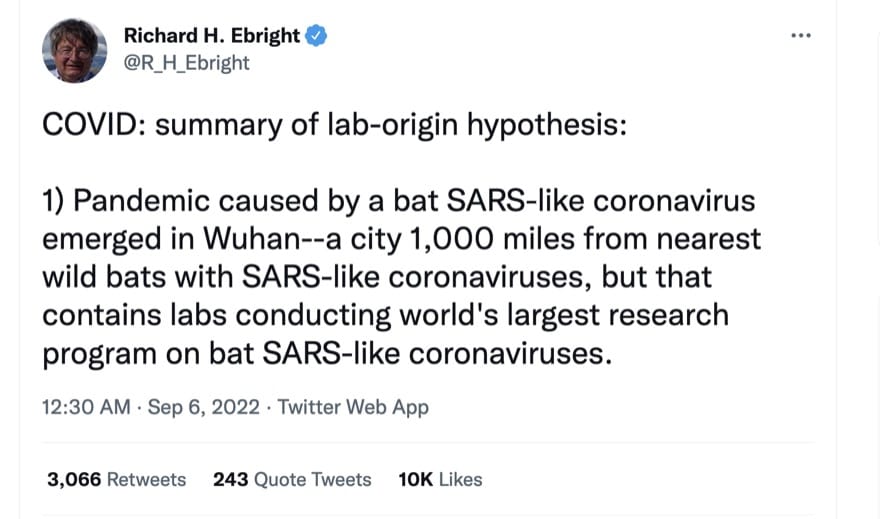
Here we review data supporting a zoonosis hypothesis at the Huanan Seafood Market (HSM). We undertake statistical analysis of case locations and wildlife stall locations. We additionally analyze environmental sampling and review the likelyhood of susceptible animals carrying a SARS-CoV-2 projenitor virus causing a spillover in Wuhan and only Wuhan of all locations in China. We find insufficient data to support a zoonosis hypothesis and instead conclude that the most likely scenario is that an infected person brought SARS-CoV-2 to the HSM, sparking a superspreader event.
Zoonosis at the Huanan Seafood Market: A Critique

